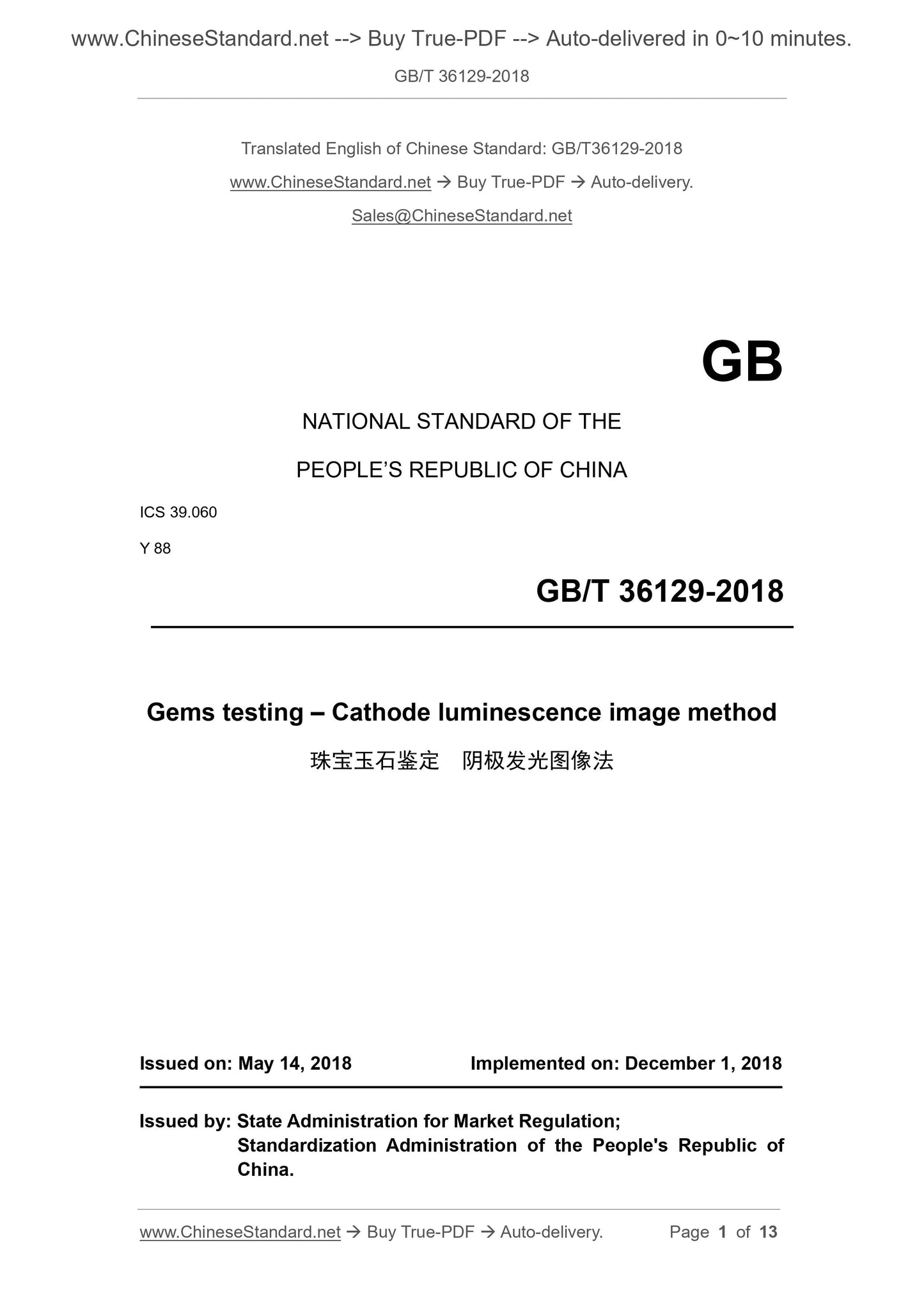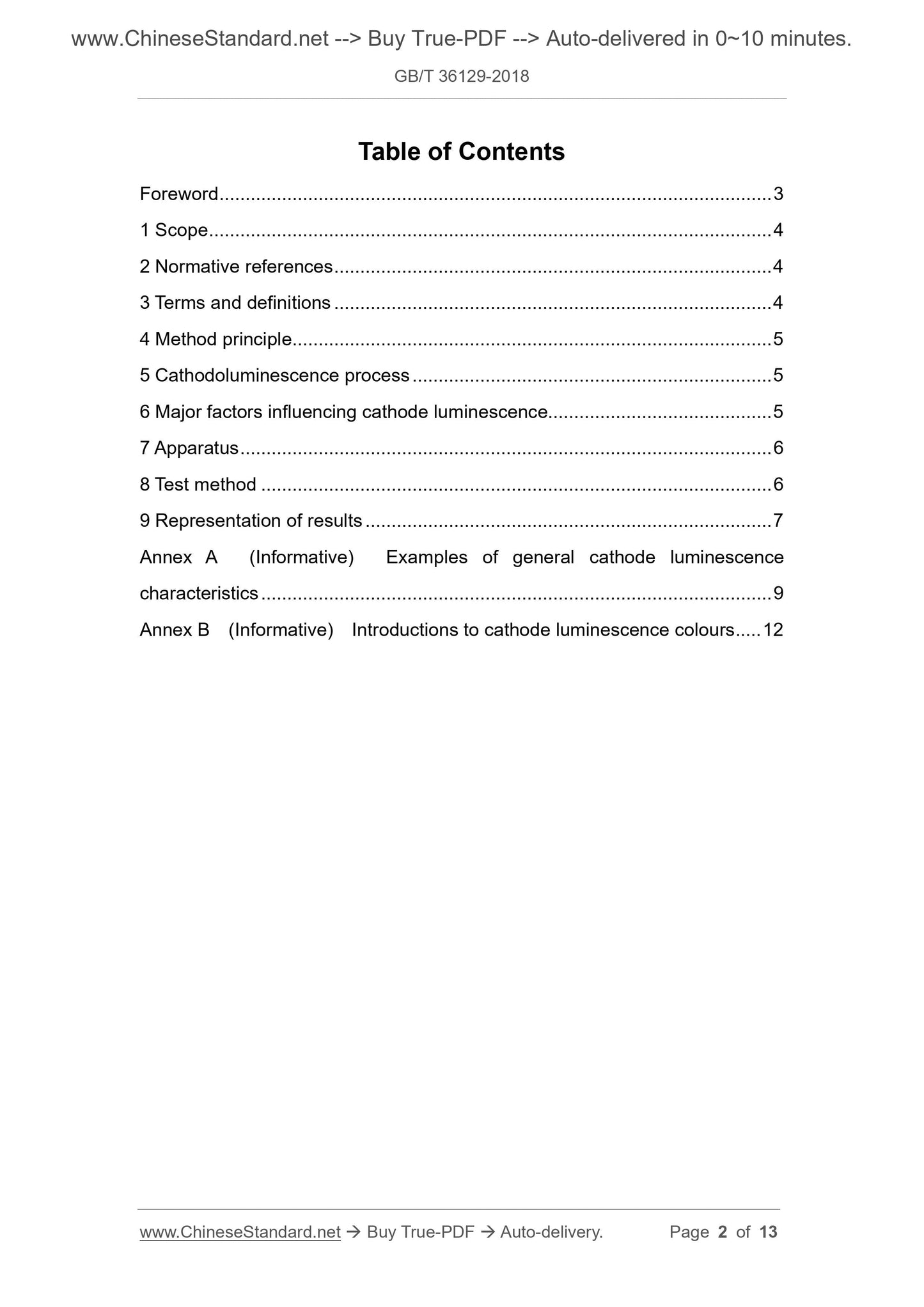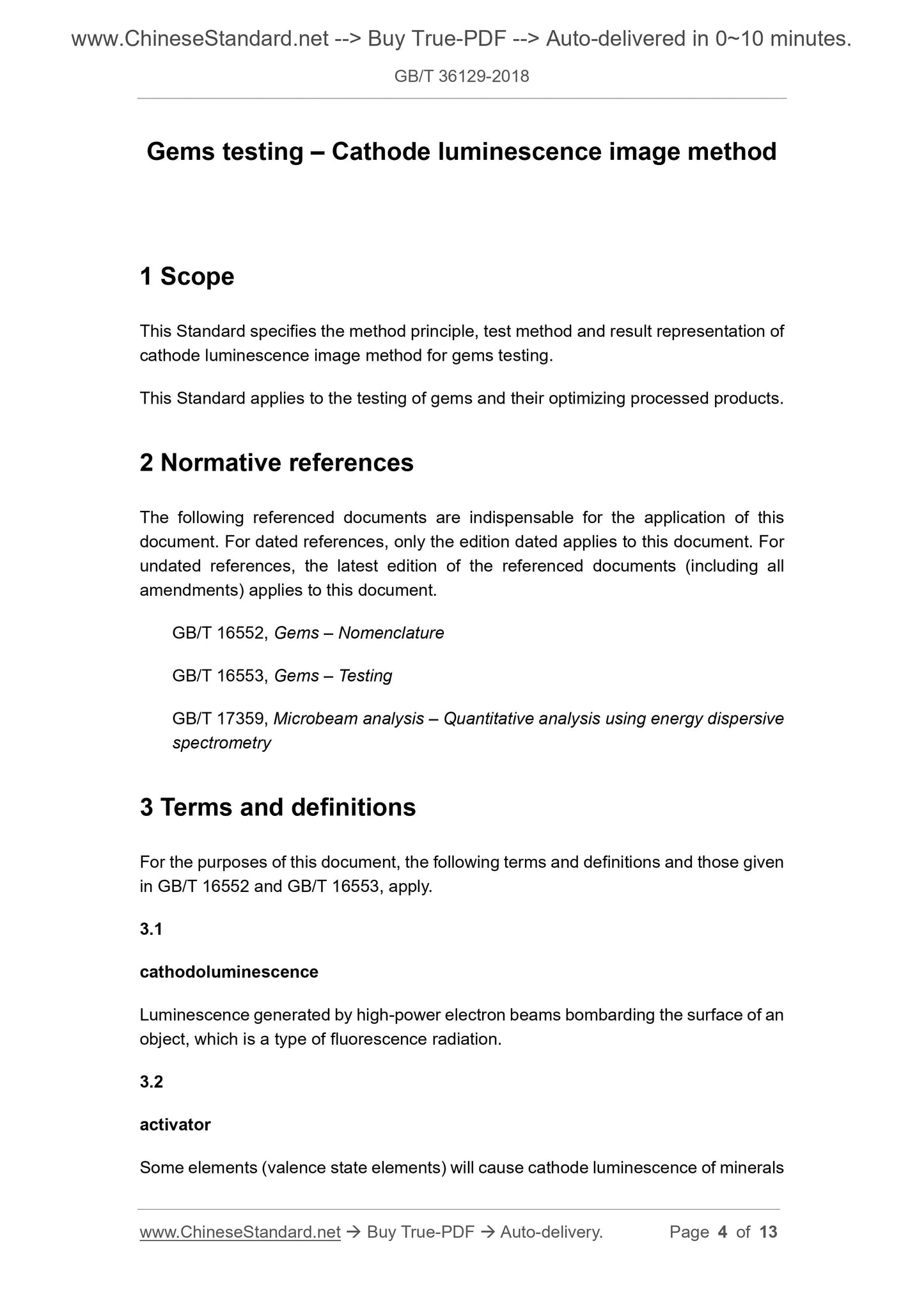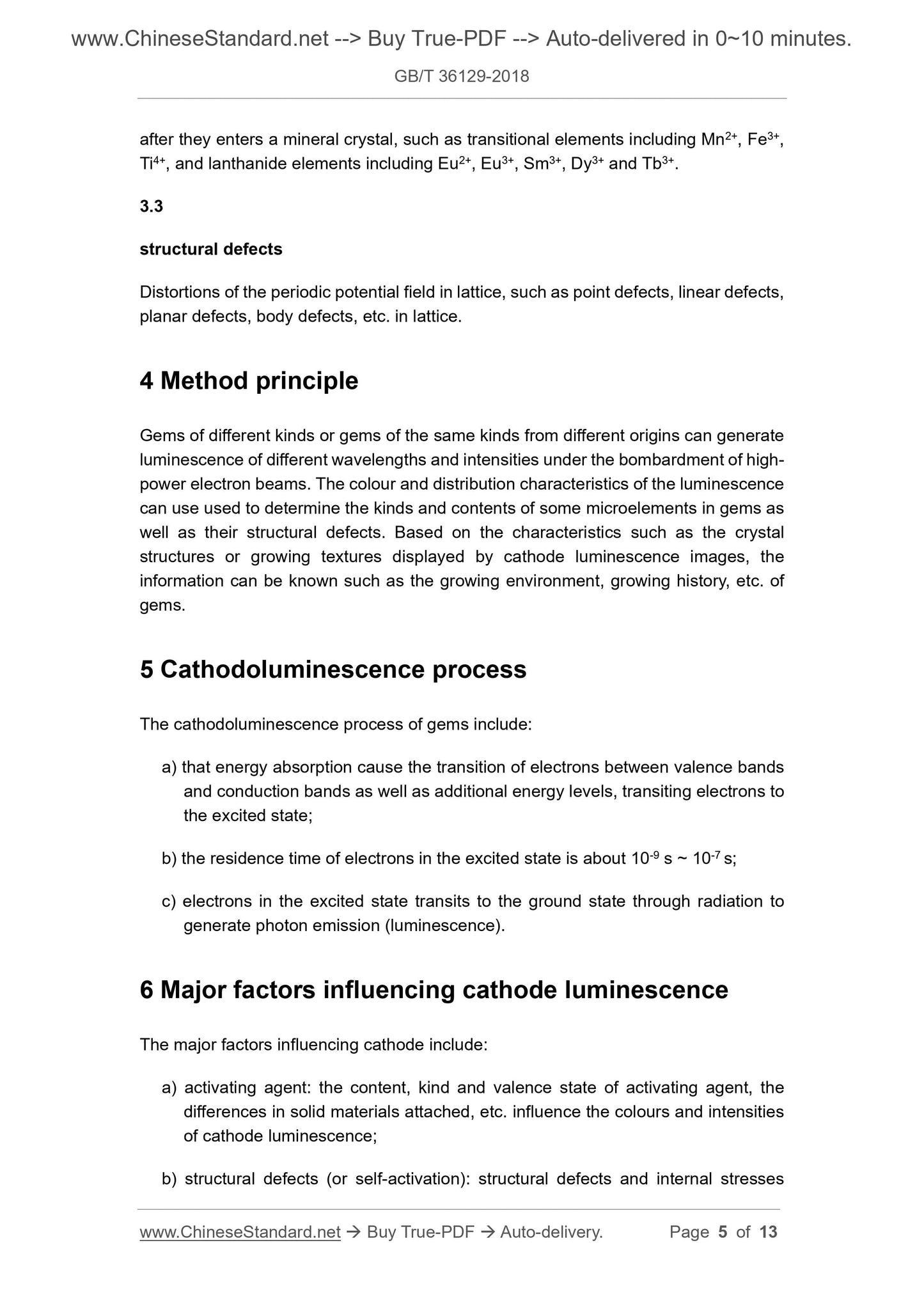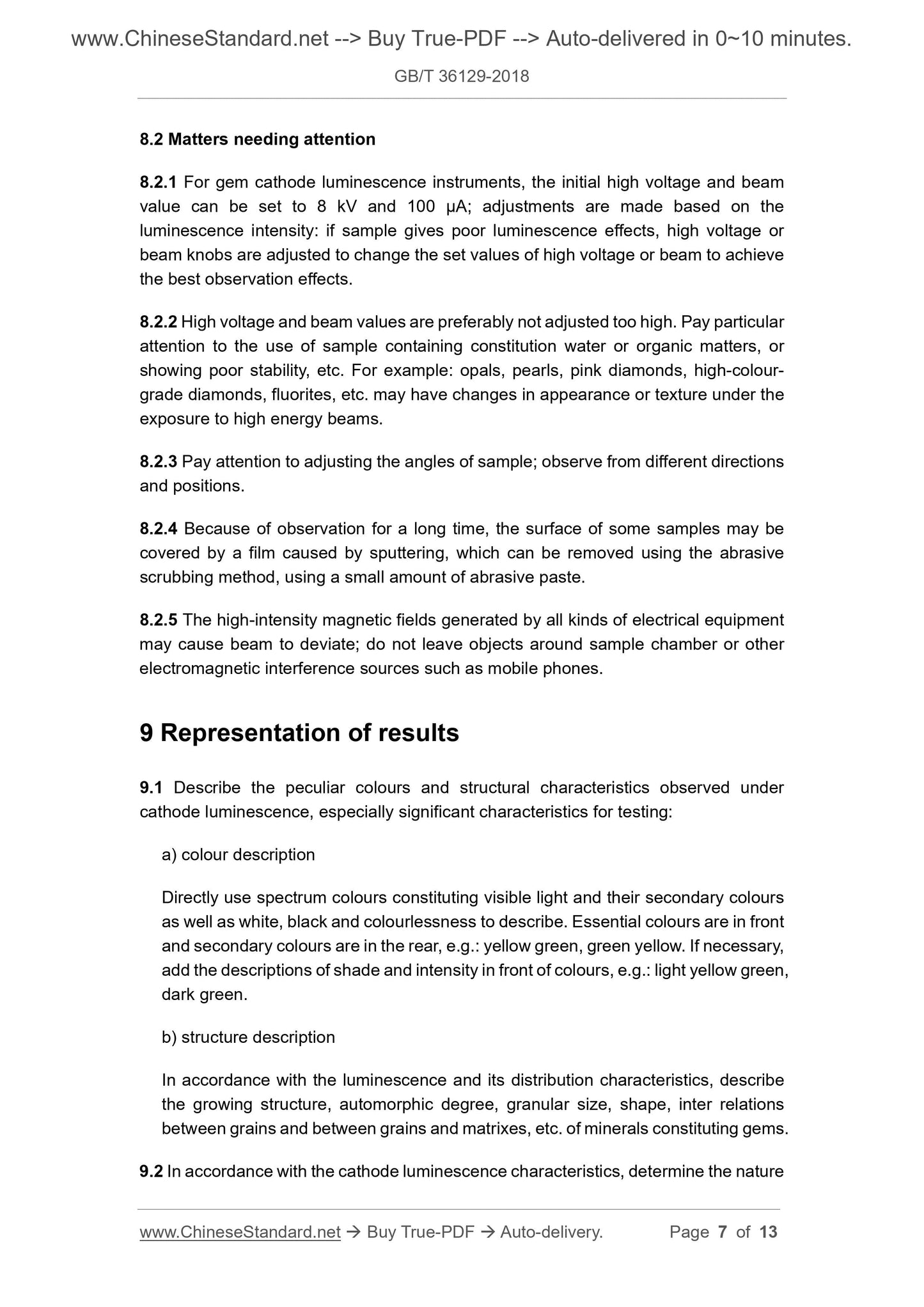1
/
of
5
www.ChineseStandard.us -- Field Test Asia Pte. Ltd.
GB/T 36129-2018 English PDF (GB/T36129-2018)
GB/T 36129-2018 English PDF (GB/T36129-2018)
Regular price
$140.00
Regular price
Sale price
$140.00
Unit price
/
per
Shipping calculated at checkout.
Couldn't load pickup availability
GB/T 36129-2018: Gems testing - Cathode luminescence image method
Delivery: 9 seconds. Download (and Email) true-PDF + Invoice.Get Quotation: Click GB/T 36129-2018 (Self-service in 1-minute)
Newer / historical versions: GB/T 36129-2018
Preview True-PDF
Scope
This Standard specifies the method principle, test method and result representation ofcathode luminescence image method for gems testing.
This Standard applies to the testing of gems and their optimizing processed products.
Basic Data
| Standard ID | GB/T 36129-2018 (GB/T36129-2018) |
| Description (Translated English) | Gems testing - Cathode luminescence image method |
| Sector / Industry | National Standard (Recommended) |
| Classification of Chinese Standard | Y88 |
| Classification of International Standard | 39.060 |
| Word Count Estimation | 10,145 |
| Date of Issue | 2018-05-14 |
| Date of Implementation | 2018-12-01 |
| Regulation (derived from) | National Standards Announcement No. 6 of 2018 |
| Issuing agency(ies) | State Administration for Market Regulation, China National Standardization Administration |
Share
